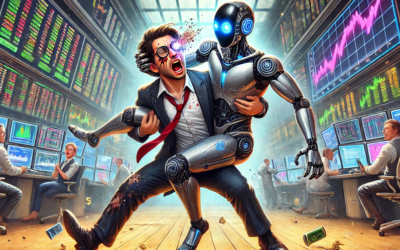Daytrading – Markets, Charts and Timeframes
Lots of struggling traders email us, looking for answers. I thought in this case, I’d share the answer as I think it will benefit others. The email:
“I carefully watched and read all the info you sent me. So I have been trading, unsuccessfully, for about 6 years now, and it seems that my dream is slowly fading away despite my continuous efforts. I am trading mes and mcl. My strategy is day-trading mostly on higher time frames, 4 hrs and daily and in a flash my trade management focuses on keeping as long as price action allows. Now watching your material I realized that your approach is more of a quick scalp with knife precision. Unfortunately, I am terrible on taking many very short-term trades mainly because of psychology. I don’t know if I have understood correctly, but please be so kind and give me your advice.“
Let’s take this one step at a time:
“I am trading mes and mcl“
There are arguments for and against trading multiple markets when still unprofitable. There is a popular argument that states, “If you can’t profit on one market, you can’t profit on two”. It makes sense – but on the other hand, if you trade only 1 market – there will be days you have to sit on your hands. With 2 markets, you are more likely to get opportunities as long as the two markets are not so closely correlated. So, for example – it wouldn’t make a lot of sense to trade ES and NQ – they are both based on the US stock market, they both “wake up” at the same time, it’s rare for one to be trending while the other is chopping around. With ES and CL (or MES and MCL) – they are “moved” by different factors. The ES is based on the US stock market and Crude is energy. Some events will impact both markets – like changes in interest rates. But others, such as a lack of storage space for Crude, will largely impact just CL itself.
What will be different for each instrument and what is skipped by most failing traders is “situational awareness” – understanding what’s going on in that market BEFORE you open a chart and see where it’s trading. If your trading day starts by opening a chart and trying to make all your decisions based on what you see there, you’ll likely fail.
Situational awareness means looking at the news, subscribing to free newsletters from outlets like Reuters, and looking at the big picture before you trade. It’s about getting a “feel” for what the mood is in the markets. You don’t need to be an economist, you just need a little common sense. If there’s major news from the Middle East – it’s probably going to impact oil prices, AND you need to be aware that related news could come out any time during the day. The ES can be impacted by company-specific moves – especially in massive companies like Apple and Amazon – BUT – they aren’t supposed to put out major price-moving news during the trading day. So looking at a summary of the earnings reports is something you only need to do in the AM.
What do you do with this intel, though? Is there a complex set of mechanical rules that tie economic events to moves in the market? Nope. You are just tuning into the market and getting a feel for whether something is going to be bringing people into the market or not. It is an indicator of whether moves have a better chance of being sustained because of institutional participation.
I think most traders skip this because watching lines cross on a chart is super-easy and very mechanical. Lines either cross or don’t cross. When you bring news into it – decisions seem to become more complex, and more vague. It seems as if you need to be able to translate economic outcomes into buying/selling decisions – but it’s not like that. On really BAD news days – you are likely to see a market tank and then recover – and you can partake in either move. So it’s more of a way to gauge follow-up potential on moves.
Now – some people DO trade the news events and in this case, it’s more based on how a market reacted to a similar event on previous occasions, than being able to translate macro-economic events into intraday moves.
In summary – two instruments aren’t bad BUT – if you aren’t becoming situationally aware of either – you’ll be trading with one arm tied behind your back. For more on situational awareness, click here.
“My strategy is day-trading mostly on higher time frames, 4 hrs and daily“
I don’t personally buy into this approach to day trading. There are a lot of people who believe “the markets are fractal” – that “a chart is a chart”. Regardless of the timeframe, you can trade the same patterns.
This breaks down when you consider “the day”. The day is a distinct unit of trading that has no higher or lower timeframe.
The ES opens in the evening in the US and trades overnight. Then at 9:30 am EST, the stock market opens and more people join the market. We tend to see the market slow down as we approach lunchtime and wake up a little in the afternoon. We then see very specific action at the close.
So when we trade the ES – we have to think about it in terms of how the overnight trading went. This journal on Nexusfi.com may be 10 years old, but it shows some of the considerations you can make when approaching the day. We consider where we are trading relative to the week, to yesterday, to the overnight session. Prices from the week, the prior day, and overnight are of significance. Of course, longer-term levels such as the all-time high, and major prior swings – are also of relevance.
So – rather than thinking of the market as something that flows continuously from one bar on the chart to the next on any given timeframe, it should be considered as broken up into weeks and days/overnight and daytime. You also need to consider the life-cycle of the day itself, from the fervent open to the sluggish lunchtimes to the rather odd end of the day.
“Now watching your material, I realized that your approach is more of a quick scalp with knife precision“
Using Order Flow is not just about making a quick scalp. It can be used to make a quick scalp – but if you scroll through the journal – you’ll see that we are considering the day before the day starts. We are looking for common reaction points. That would be sort of pointless if you were just using the DOM to scalp a tick. You wouldn’t need all that context trading at such low a level.
What the Order Flow does is help us make a trading decision. If our situational awareness and our prep were good, then we are more likely to join sustained moves. Order Flow doesn’t force you to trade lower timeframes, it’s a tool that intraday swingers use to enter and exit trades, often alongside their charts.
Simplify Your Trading
Take a look into the decision making process of professional traders with this video training series that helps you make smarter trading decisions.




0 Comments